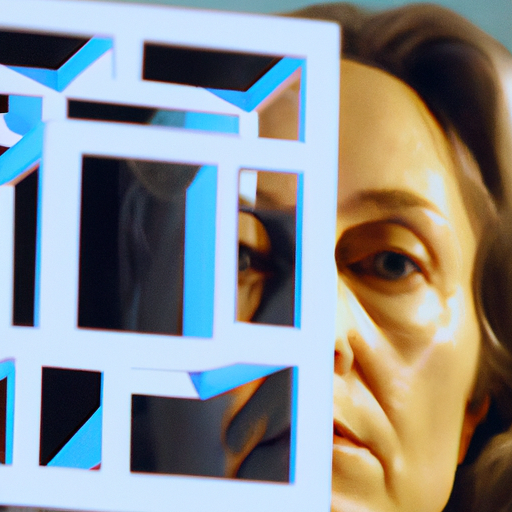
-
Table of Contents
- Cubist Geometries: Influences on Graphic Design
- Understanding Cubism
- The Influence of Cubist Geometries on Graphic Design
- 1. Abstraction and Simplification
- 2. Fragmentation and Collage
- 3. Multiple Perspectives and Depth
- 4. Deconstruction and Reconstruction
- The Lasting Legacy of Cubist Geometries in Graphic Design
Cubist Geometries: Influences on Graphic Design

Graphic design is a constantly evolving field that draws inspiration from various art movements throughout history. One such movement that has had a significant impact on graphic design is Cubism. Cubism, which emerged in the early 20th century, revolutionized the way artists approached representation and perception. This article explores the influences of Cubist geometries on graphic design, examining its key characteristics, notable examples, and the lasting legacy it has left on the field.
Understanding Cubism
Cubism was a groundbreaking art movement pioneered by Pablo Picasso and Georges Braque in the early 1900s. It challenged traditional notions of perspective and representation by breaking down objects into geometric forms and presenting multiple viewpoints simultaneously. The movement was characterized by its emphasis on abstract shapes, fragmented forms, and a rejection of naturalistic representation.
One of the key principles of Cubism was the exploration of multiple viewpoints. Artists would depict objects from different angles and perspectives, often overlapping them to create a sense of depth and movement. This approach shattered the traditional notion of a single fixed viewpoint and instead presented a more dynamic and fragmented representation of reality.
The Influence of Cubist Geometries on Graphic Design
The revolutionary ideas and techniques of Cubism had a profound impact on the field of graphic design. Designers began to incorporate Cubist geometries into their work, embracing the movement’s abstract forms and fragmented compositions. Here are some of the ways Cubism influenced graphic design:
1. Abstraction and Simplification
Cubism encouraged artists to break down complex forms into simplified geometric shapes. This approach translated well into graphic design, where simplicity and clarity are often valued. Designers started using abstract shapes and simplified forms to convey messages and create visually striking compositions. The use of geometric shapes in logos, posters, and other design elements became a popular trend influenced by Cubism.
Example: The logo of the Metropolitan Museum of Art in New York City features a simplified representation of a Greek temple using geometric shapes, reminiscent of Cubist aesthetics.
2. Fragmentation and Collage
Cubism’s fragmented approach to representation also found its way into graphic design. Designers began to experiment with collage techniques, combining different elements and perspectives to create visually dynamic compositions. By breaking down images into fragments and rearranging them, designers could convey a sense of movement and energy.
Example: The cover art of David Bowie’s album “Heroes” designed by Jonathan Barnbrook features a fragmented portrait of Bowie, with different parts of his face rearranged to create a visually striking and dynamic composition.
3. Multiple Perspectives and Depth
The exploration of multiple viewpoints in Cubism challenged the traditional notion of a single fixed perspective. This idea influenced graphic designers to experiment with depth and perspective in their compositions. By incorporating multiple viewpoints and overlapping elements, designers could create a sense of depth and movement in their work.
Example: The poster for the movie “Inception” designed by BLT Communications features a fragmented cityscape with multiple perspectives, creating a sense of depth and disorientation that reflects the film’s themes of dreams and reality.
4. Deconstruction and Reconstruction
Cubism’s deconstruction of objects into geometric forms inspired designers to break down and reconstruct visual elements in their work. By analyzing and reassembling different parts, designers could create unique and visually engaging compositions. This approach allowed for experimentation and innovation in graphic design.
Example: The album cover of Pink Floyd’s “Dark Side of the Moon” designed by Storm Thorgerson features a prism deconstructed into its geometric components, symbolizing the band’s exploration of light and sound.
The Lasting Legacy of Cubist Geometries in Graphic Design
The influence of Cubist geometries on graphic design is still evident today. The movement’s emphasis on abstraction, simplification, fragmentation, and multiple perspectives continues to shape the way designers approach their work. Cubism opened up new possibilities for visual communication and challenged traditional notions of representation, leaving a lasting impact on the field of graphic design.
Key Takeaways:
- Cubism was a groundbreaking art movement that revolutionized representation and perception.
- Graphic design embraced Cubist geometries, incorporating abstract shapes, fragmentation, and multiple perspectives.
- Cubist influences can be seen in the use of abstraction and simplification, fragmentation and collage, multiple perspectives and depth, and deconstruction and reconstruction in graphic design.
- The legacy of Cubist geometries in graphic design is evident in the continued emphasis on these principles in contemporary design.
In conclusion, Cubism’s exploration of geometries and its rejection of traditional representation had a profound influence on graphic design. The movement’s emphasis on abstraction, simplification, fragmentation, and multiple perspectives opened up new possibilities for designers. By incorporating Cubist geometries into their work, designers continue to create visually striking and innovative compositions that challenge traditional notions of visual communication.
